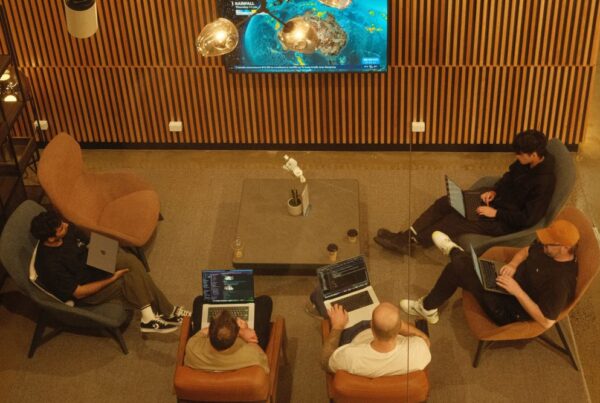
In any workplace, productivity and collaboration hinge on more than just skills and experience—they’re deeply influenced by individual work styles. Understanding how people approach their tasks can unlock better communication, reduce conflicts, and ultimately, improve team performance. Recognizing these diverse approaches helps managers tailor their leadership style and create a more cohesive work environment. In this article, United Co. explores the different types of work styles, how they impact productivity and practical ways to adapt leadership strategies to suit these varying preferences.
What Are Work Styles?
Work styles refer to the distinct ways individuals approach their responsibilities and tasks. These styles shape how people manage time, solve problems, and interact with colleagues. Some may prefer structure and detailed planning, while others thrive in more flexible and spontaneous settings.
Understanding these preferences is essential for creating an inclusive workplace where everyone can contribute effectively. By identifying work styles within a team, managers can foster stronger communication, improve morale, and achieve better results.
Key Types of Work Styles
No two people work the same way, but most work styles can be broadly categorized into analytical, creative, and collaborative. Here’s a closer look at each.
1. Analytical Work Style
Individuals with an analytical work style tend to be detail-oriented and focused on data-driven decision-making. They thrive in environments where there are clear processes and expectations.
Characteristics:
- Logical and methodical
- Prefers working independently
- Relies on data and research
Tips for Managers:
- Provide clear instructions and guidelines.
- Use data to support your decisions.
- Allow time for thorough research and analysis.
Analytical workers are great at problem-solving and delivering precise outcomes. However, they may need help adapting to ambiguous situations, so it’s important to provide clarity wherever possible.
2. Creative Work Style
Creative individuals bring fresh ideas and out-of-the-box thinking to the table. They thrive in environments that encourage innovation and flexibility.
Characteristics:
- Imaginative and open-minded
- Enjoys brainstorming and ideation
- Adapts well to change
Tips for Managers:
- Encourage creative problem-solving.
- Provide flexibility in schedules and tasks.
- Avoid micromanaging and give them space to explore ideas.
Creative thinkers can introduce valuable innovation, but they may struggle with routine tasks. Providing a balance between structure and freedom is key to keeping them engaged.
3. Collaborative Work Style
People with a collaborative work style thrive in team settings. They value open communication and are motivated by shared goals.
Characteristics:
- Strong communicators
- Team-oriented
- Relationship-focused
Tips for Managers:
- Foster a culture of teamwork.
- Encourage open feedback and communication.
- Recognize group achievements.
Collaborative individuals are essential for building strong team bonds, but they may need encouragement to work independently. Creating opportunities for group projects can help them excel.
Read More About 6 Creative Team Workshops to Boost Innovation and Collaboration
Adapting Leadership to Different Work Styles
Effective managers know that a one-size-fits-all leadership approach doesn’t work. To truly bring out the best in your team, it’s important to adapt your management style to accommodate different work styles.
Here are a few tips to help you do that:
1. Identify Work Styles: Take time to observe and understand how each team member prefers to work. This can be done through assessments, one-on-one conversations, or simply by paying attention to their behavior.
2. Tailor Communication: Adjust your communication style based on your team members’ preferences. Analytical workers may appreciate detailed emails, while creative thinkers might respond better to informal brainstorming sessions.
3. Provide Flexibility: Allow team members to work in ways that align with their strengths. This might include offering flexible schedules or remote work options.
4. Leverage Strengths: Assign tasks that play to each team member’s strengths. This not only boosts productivity but also increases job satisfaction.
Read More About Corporate Team Building Event Ideas for a Stronger, More Engaged Team
Benefits of Recognizing Diverse Work Styles
Embracing diverse work styles can have a transformative impact on team dynamics and overall performance. Here are some key benefits:
1. Stronger Communication
Understanding different work styles helps managers tailor their communication strategies, reducing misunderstandings and ensuring clarity. By communicating in ways that resonate with individuals, team members are more likely to feel heard and understood, fostering a more open and transparent work environment.
Managers who take the time to learn how their team members prefer to give and receive information can reduce communication barriers. For example, some team members may prefer detailed written instructions, while others thrive in verbal discussions or visual presentations.
2. Reduced Conflicts
When managers and colleagues recognize and respect different work styles, it minimizes misunderstandings and reduces the likelihood of conflicts. Many workplace conflicts arise from differences in working preferences, whether it’s how people manage time, process feedback, or approach problem-solving.
By acknowledging these differences, managers can proactively address potential friction points and create an environment where diverse approaches are seen as strengths rather than obstacles. This mutual respect leads to smoother collaboration and more constructive conflict resolution.
3. Enhanced Productivity
Allowing employees to work in ways that suit their strengths leads to higher engagement and overall productivity. When individuals feel comfortable and supported in their preferred work style, they are more likely to produce high-quality work and meet deadlines.
Managers can maximize productivity by aligning tasks with employees’ natural tendencies. For instance, analytical workers excel in tasks that require data analysis and detailed planning, while creative workers thrive when given the freedom to innovate and brainstorm.
Additionally, recognizing diverse work styles can help teams distribute workloads more efficiently. By assigning tasks based on strengths and preferences, managers ensure that everyone is contributing in a way that feels natural and fulfilling.
4. Increased Innovation
Diverse work styles bring a variety of perspectives and ideas to the table, fostering a culture of creativity and innovation. When teams include a mix of analytical, creative, and collaborative thinkers, they are better equipped to tackle complex problems and generate innovative solutions.
Encouraging employees to share their unique perspectives not only drives innovation but also empowers individuals to feel more confident in contributing ideas. This diversity of thought can lead to breakthrough ideas that may not have emerged in a more homogenous team setting.
Moreover, by creating an environment where different work styles are valued, organizations can attract and retain top talent from diverse backgrounds, further enhancing their creative potential.
5. Improved Team Morale and Engagement
When employees feel that their unique work styles are recognized and respected, it significantly boosts morale and engagement. People want to feel seen and appreciated for who they are, and acknowledging their preferred work styles is a powerful way to achieve this.
High morale leads to lower turnover rates, increased loyalty, and a more positive work environment overall. Engaged employees are also more likely to go the extra mile, contribute to team success, and support their colleagues.
6. Better Adaptability to Change
Teams that understand and embrace diverse work styles are better equipped to adapt to changes in the workplace. Whether it’s implementing new processes, adopting new technologies, or responding to market shifts, adaptable teams can navigate change more effectively.
By leveraging the strengths of different work styles, teams can approach change from multiple angles—ensuring that both the practical and creative aspects of transitions are well-managed. This adaptability helps organizations stay resilient and competitive in dynamic environments.
Read More About How to Run an Inclusive Office Workshop for Diverse Teams
Understanding and recognizing different work styles is essential for building a high-performing team. By adapting your leadership approach to suit these varying preferences, you can create a more inclusive, productive, and harmonious work environment.
At United Co., we believe that fostering a workplace culture that values diverse work styles leads to stronger communication, better collaboration, and ultimately, greater success. If your business is looking for a flexible workspace solution that accommodates various work styles, United Co.’s serviced offices offer a range of private offices and shared spaces designed to meet your team’s unique needs. Our modern facilities and thoughtful design promote productivity and collaboration, helping your team work at their best. Explore our serviced offices offerings and see how United Co. can support your business in creating a more dynamic and adaptable work environment.




